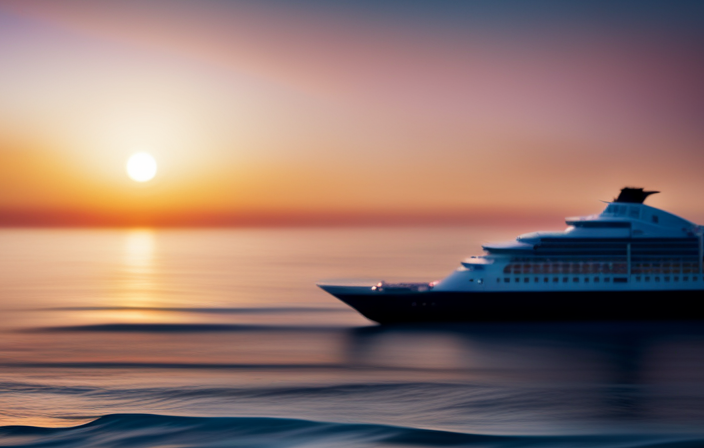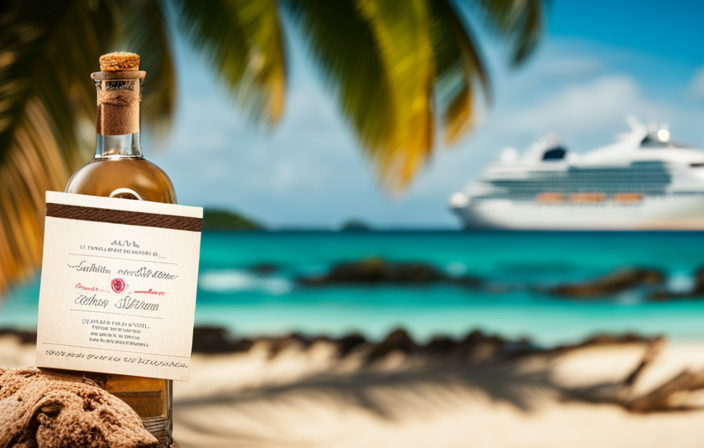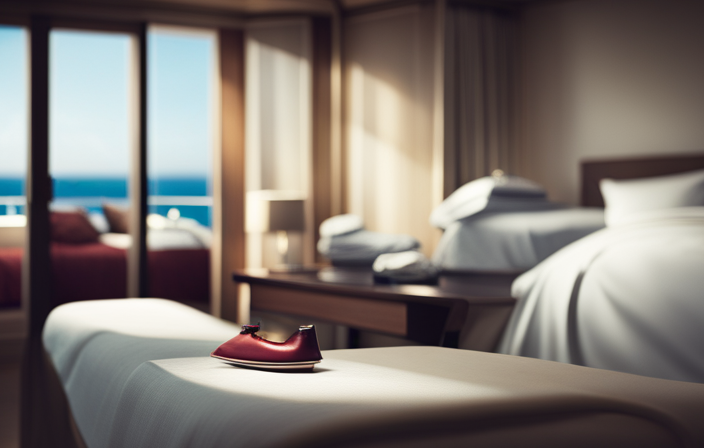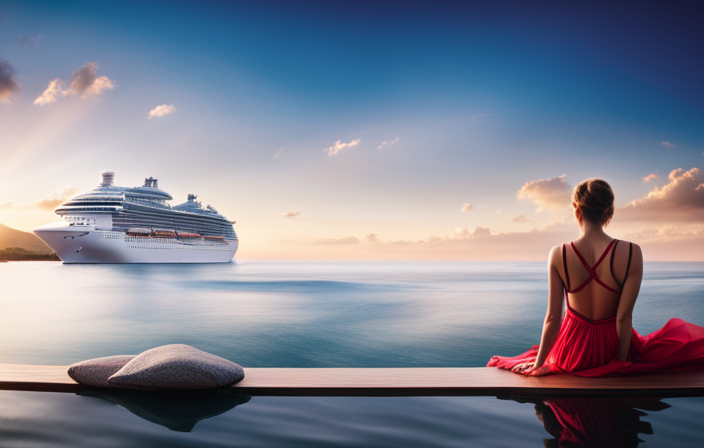There you are, gliding along the highway, relishing the expanse of the open road ahead of you, when abruptly, you realize it’s necessary to decelerate. However, the idea of applying the brakes doesn’t exactly fill you with enthusiasm. It’s at this moment that the adaptive cruise control sensor becomes exceptionally beneficial.
This nifty little device, tucked away somewhere in your vehicle, is responsible for maintaining a safe distance between you and the car in front of you. It’s like having a second set of eyes on the road, constantly monitoring your surroundings and adjusting your speed accordingly.
But where exactly is this elusive sensor located? Well, my friend, that’s what we’re here to find out. In this article, we’ll dive into the inner workings of adaptive cruise control, explore the common locations for these sensors, and even give you some tips on how to identify and maintain them.
So buckle up and get ready to uncover the secrets of the adaptive cruise control sensor.
Key Takeaways
- The adaptive cruise control sensor is typically located in the front grille or bumper of the vehicle.
- Calibration of the sensor is crucial for accurate performance and involves adjusting and aligning the sensor to detect objects and maintain a safe distance.
- Sensor replacement restores the sensor’s functionality and vision, and it is important to follow the manufacturer’s instructions for proper installation.
- Regular sensor maintenance, including cleaning and inspection, is essential for maintaining optimal performance and a smooth driving experience.
How Adaptive Cruise Control Works
You might be surprised to learn that the adaptive cruise control sensor is typically located behind the front grille of your vehicle. This sensor is a vital component of the adaptive cruise control system, which uses advanced sensor technology to enhance your driving experience.
By constantly monitoring the distance between your vehicle and the one ahead, the sensor allows the system to automatically adjust your speed, maintaining a safe following distance. This not only reduces the risk of collisions, but also makes long drives more comfortable and less tiring.
The benefits of adaptive cruise control are numerous, providing convenience, safety, and peace of mind. Understanding the components of adaptive cruise control, including the sensor, is crucial to fully appreciate the technology and the advantages it offers.
Understanding the Components of Adaptive Cruise Control
Imagine driving down the highway, and your car becomes a master chef, using its magical ingredients to perfectly time the cooking of each component, ensuring a harmonious blend of flavors and textures. That’s how adaptive cruise control works, but instead of cooking, it’s all about maintaining a safe and efficient driving experience.
One of the key benefits of using adaptive cruise control is the ability to maintain a set distance from the vehicle ahead, automatically adjusting your speed to match the flow of traffic. This not only reduces driver fatigue but also improves fuel efficiency.
There are different types of adaptive cruise control systems, including radar-based and camera-based. Radar-based systems use sensors to detect the distance and speed of the vehicle ahead, while camera-based systems use image recognition to achieve the same effect.
Now, let’s dive into the common locations for adaptive cruise control sensors.
Common Locations for Adaptive Cruise Control Sensors
When driving with this advanced technology, it’s essential to be aware of the various locations where the sensors for adaptive cruise control are typically installed in your vehicle. These sensors play a crucial role in maintaining a safe distance from the vehicle ahead by detecting its speed and adjusting your vehicle’s speed accordingly. The table below provides a comprehensive overview of the common locations for adaptive cruise control sensors in different vehicle models:
| Vehicle Model | Sensor Location |
|---|---|
| Sedans | Front grille |
| SUVs | Front bumper |
| Trucks | Rearview mirror |
| Sports cars | Behind the windshield |
It’s important to note that the sensor installation may vary depending on the vehicle’s make and model. Additionally, sensor compatibility with the vehicle’s existing features and systems can also influence the sensor location. Moving forward, let’s explore the factors that can affect the placement of these sensors.
Factors Affecting Sensor Location
The placement of these sensors can be influenced by factors such as the vehicle’s design and functionality, much like how a puzzle piece fits perfectly into its designated spot.
Factors affecting sensor placement include the need for unobstructed views and the ability to accurately detect the distance and speed of other vehicles. For example, sensors are commonly located behind the grille or in the front bumper to ensure a clear line of sight.
Additionally, the impact of weather conditions on sensor performance is taken into consideration. Extreme temperatures, heavy rain, or snow can potentially interfere with the sensor’s ability to function properly. Therefore, manufacturers typically position the sensors in areas that minimize exposure to these conditions.
Understanding the factors that influence sensor placement can help you identify the sensor in your vehicle without difficulty.
How to Identify the Sensor in Your Vehicle
One way to easily identify the sensor in your vehicle is by understanding the factors that influence its placement. Adaptive cruise control sensors can be located in various positions depending on the make and model of the vehicle.
Common locations include behind the grille, on the front bumper, or even integrated into the rearview mirror. To identify the sensor type, you can refer to your vehicle’s owner’s manual or consult with a certified mechanic.
Troubleshooting sensor issues can be done by checking for any physical damage, such as loose connections or obstructions. Regular maintenance is crucial for proper sensor functionality, as dirt or debris buildup can affect its performance. Maintaining the sensor ensures accurate detection of other vehicles and helps prevent accidents.
By keeping the sensor clean and well-maintained, you can maximize the effectiveness of your adaptive cruise control system.
Importance of Proper Sensor Maintenance
Make sure to properly maintain and clean your vehicle’s sensor to ensure accurate detection of other vehicles and prevent potential accidents.
- Regularly inspect the sensor for any signs of physical damage, such as cracks or dents, as these can affect its functionality.
- Keep the sensor clean by removing any dirt, debris, or snow that may accumulate on its surface, as these can interfere with its ability to detect other vehicles.
- Check the sensor’s wiring connections to ensure they’re secure and free from corrosion, as loose or corroded connections can lead to sensor malfunction.
By following these sensor troubleshooting and maintenance tips, you can help ensure that your adaptive cruise control system functions properly and keeps you safe on the road.
Moving on to potential issues with adaptive cruise control sensors, it’s important to be aware of some common problems that may arise.
Potential Issues with Adaptive Cruise Control Sensors
When it comes to adaptive cruise control sensors, there are several potential issues that can arise.
One of the main concerns is sensor obstruction, which can occur when dirt, debris, or other objects block the sensor’s view.
Additionally, sensor calibration is crucial for accurate functioning, as any misalignment can lead to incorrect readings and compromised safety.
Finally, sensor replacement may be necessary if the sensor becomes damaged or worn out over time.
Proper maintenance and attention to these key points are essential to ensure the optimal performance of adaptive cruise control systems.
Sensor Obstruction
Located behind the grille of your vehicle, the adaptive cruise control sensor ensures a smooth and uninterrupted driving experience. To maintain its proper functionality, it’s crucial to regularly clean the sensor. This can be done by using a soft cloth or brush to remove any dirt or debris that may have accumulated on the sensor’s surface.
In case of any issues, troubleshooting the sensor can help identify and resolve any problems. This can include checking the sensor’s wiring connections, inspecting for any physical damage, and ensuring that the sensor is properly mounted. By taking these steps, you can ensure that your adaptive cruise control sensor is in optimal condition, allowing for a safer and more enjoyable driving experience.
Moving on to sensor calibration, it’s important to ensure that the sensor’s settings are correctly calibrated for accurate performance.
Sensor Calibration
After discussing the issue of sensor obstruction in the previous section, it’s important to understand the significance of sensor calibration in adaptive cruise control systems.
Sensor calibration is a crucial step in ensuring the accuracy and functionality of the system. During this process, the sensor is adjusted and aligned to ensure that it accurately detects objects and maintains a safe distance.
The calibration process involves carefully positioning the sensor in the correct location, typically in the front grille or bumper of the vehicle. This allows the sensor to have an unobstructed view of the road ahead, ensuring optimal performance.
Once the sensor calibration is complete, the adaptive cruise control system can operate effectively, providing the driver with a smooth and reliable driving experience.
Now, let’s move on to the next section, where we’ll discuss sensor replacement and its importance in maintaining the functionality of the system.
Sensor Replacement
If your vehicle’s eyes become cloudy or blind, a sensor replacement can restore its vision and keep it cruising smoothly on the road. When it comes to sensor installation, it’s crucial to follow the manufacturer’s instructions to ensure proper functionality.
Here are three key points to consider when replacing your adaptive cruise control sensor:
- Ensure the sensor is compatible with your vehicle’s make and model.
- Double-check the wiring connections to guarantee a secure and accurate installation.
- Perform a thorough calibration process after the sensor replacement to ensure optimal performance.
Troubleshooting sensor issues can be challenging, but with the right knowledge, you can overcome them. Understanding the sensor’s operation and potential error codes can help pinpoint the problem. Additionally, checking for any physical damage or obstruction to the sensor can also help diagnose issues.
By addressing these concerns, you can maintain the functionality of your adaptive cruise control sensor and ensure a safe driving experience.
Tips for Maintaining Sensor Functionality
To maintain the functionality of adaptive cruise control sensors, regular cleaning is essential. Dust, dirt, and debris can accumulate on the sensor, affecting its performance. It’s important to clean the sensor using a soft cloth or brush, ensuring that no residue is left behind.
Additionally, avoiding any potential damage to the sensor, such as impact or physical stress, is crucial for its proper functioning.
Regular Cleaning
Make sure you regularly clean the adaptive cruise control sensor to keep it functioning properly. Cleaning techniques and best practices are crucial in maintaining the sensor’s functionality.
When cleaning the sensor, it’s important to use a non-abrasive cloth or sponge to avoid scratching the surface. Gently wipe off any dirt, dust, or debris that may have accumulated on the sensor. For stubborn dirt, you can use a mild cleaning solution specifically designed for electronic components. However, avoid using harsh chemicals or abrasive cleaners as they can damage the sensor.
Additionally, make sure to dry the sensor thoroughly after cleaning to prevent any moisture from affecting its performance.
By following these cleaning techniques, you can ensure that your adaptive cruise control sensor remains in optimal condition. This will help avoid damage to the sensor and maintain its accuracy and effectiveness in assisting your driving experience.
Avoiding Damage to the Sensor
Just like a delicate flower needs protection from harsh weather, treating the sensor with care will help prevent any damage. Avoiding sensor damage is crucial for the proper functioning of the adaptive cruise control system.
To avoid damaging the sensor, it’s important to keep it clean and free from any debris or obstructions. Regularly inspect the sensor for any signs of damage, such as cracks or loose connections. If you encounter any issues with the sensor, troubleshooting the problem is essential. This may involve checking the wiring, ensuring proper alignment, or consulting the vehicle’s manual for specific instructions.
By taking these precautions, you can maintain the sensor’s integrity and ensure optimal performance of the adaptive cruise control system.
Transitioning into the subsequent section, let’s now address some frequently asked questions about adaptive cruise control sensors.
Frequently Asked Questions about Adaptive Cruise Control Sensors
Take a look at where the adaptive cruise control sensor is located. The sensor is typically located behind the front grille or bumper of the vehicle. It is strategically positioned to have a clear view of the road ahead and detect any obstacles or vehicles in its path.
Here are some frequently asked questions about adaptive cruise control sensors:
- How do I troubleshoot my sensor if it’s not working properly?
- Can I adjust the range of the sensor to suit my driving preferences?
- What should I do if the sensor is covered with dirt or debris?
- Is it possible to recalibrate the sensor if it’s not detecting vehicles correctly?
- Are there any common issues that can affect the performance of the sensor?
By understanding these sensor troubleshooting and range adjustment methods, you can ensure a safe and smooth ride with adaptive cruise control.
Conclusion: Ensuring a Safe and Smooth Ride with Adaptive Cruise Control
To ensure a safe and smooth ride with adaptive cruise control, it’s essential to understand the importance of proper maintenance and regular sensor checks.
Sensor troubleshooting is crucial in identifying any issues that may arise with the adaptive cruise control system. By conducting regular checks, you can ensure that the sensor is functioning optimally, allowing the system to accurately detect and respond to the surrounding traffic conditions. This helps in maintaining a consistent and safe distance from the vehicle ahead, reducing the risk of collisions.
One of the key benefits of adaptive cruise control is its ability to enhance driving convenience and comfort. By automatically adjusting the vehicle’s speed to match the flow of traffic, it reduces the need for constant acceleration and deceleration, resulting in a smoother and more relaxed driving experience.
Additionally, adaptive cruise control can also contribute to improved fuel efficiency by optimizing speed and reducing unnecessary braking.
Overall, regular sensor checks and proper maintenance are essential in ensuring the reliable and efficient operation of adaptive cruise control, providing a safe and enjoyable driving experience.
Frequently Asked Questions
Can I install adaptive cruise control sensors on my vehicle after purchase?
Yes, you can install aftermarket adaptive cruise control sensors on your vehicle. This upgrade brings numerous benefits, including enhanced safety, improved fuel efficiency, and a more comfortable driving experience.
How do I know if my vehicle is equipped with adaptive cruise control sensors?
To determine if your vehicle has adaptive cruise control sensors, first, check your owner’s manual for information on the system. If you’re experiencing issues, common problems with these sensors include dirty lenses and faulty connections, which can be troubleshooted accordingly.
Can adaptive cruise control sensors be affected by extreme weather conditions?
Extreme weather conditions can wreak havoc on the accuracy of adaptive cruise control sensor technology. Rain, snow, and fog can obscure the sensor’s vision, while extreme heat or cold can negatively impact its performance.
Are there any specific maintenance tasks I need to perform on my adaptive cruise control sensors?
To ensure the optimal performance of adaptive cruise control sensors, regular maintenance tasks should be performed. This includes checking for any damage or debris that may affect the sensor’s functionality, as well as following the proper installation process.
Can adaptive cruise control sensors malfunction and cause accidents?
Adaptive cruise control sensors can malfunction due to various common causes, leading to potential risks and consequences. Signs of malfunction include sudden braking or acceleration. This failure can result in accidents, compromising vehicle safety.
Conclusion
In conclusion, understanding the location of the adaptive cruise control sensor is crucial for maintaining a safe and smooth ride. By identifying the sensor in your vehicle and keeping it well-maintained, you can ensure the functionality of this advanced feature.
While some may argue that locating the sensor can be challenging, it’s important to remember that with a little knowledge and attention to detail, you can easily find it. So, don’t let the fear of not knowing deter you from enjoying the benefits of adaptive cruise control. Take charge of your driving experience and embrace this innovative technology.
Claire, a creative soul with an unquenchable thirst for storytelling, is an integral part of the Voyager Info team. As a dedicated writer, she weaves captivating narratives that transport readers to enchanting cruise destinations and beyond.
Claire’s love affair with writing began at an early age when she discovered the magic of words and their ability to craft worlds and emotions. Her innate curiosity led her to explore various literary genres, but it was travel writing that truly captured her heart. Drawing inspiration from her own globetrotting adventures and encounters with diverse cultures, Claire embarked on a journey to become a travel writer par excellence.











